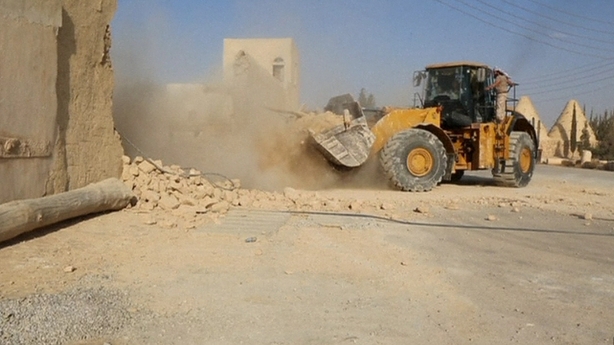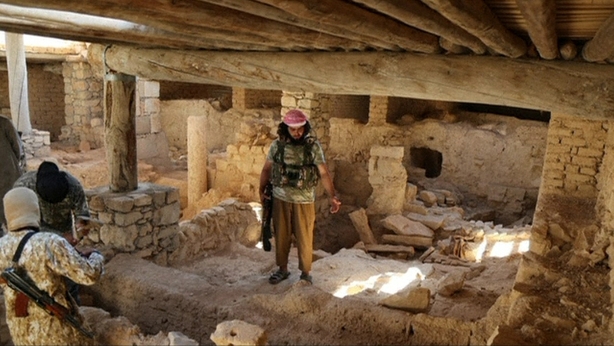The second-in-command of the Islamic State group has been killed in a drone strike in Iraq, according to the US government.
The National Security Council identified the slain militant as Fadhil Ahmad al-Hayali, also known as Haji Mutaz, and said he was IS leader Abu Bakr al-Baghdadi's senior deputy.
US forces say they were able to kill him, along with an IS "media operative" known as Abu Abdullah, on 18 August in a strike on a vehicle near the city of Mosul.
The White House described Al-Hayali as a member of the IS's ruling council, and "a primary coordinator for moving large amounts of weapons, explosives, vehicles and people between Iraq and Syria.
"He supported ISIL operations in both countries and was in charge of ISIL operations in Iraq, where he was instrumental in planning operations over the past two years, including the ISIL offensive in Mosul in June 2014," it said.
Like many senior Iraqi jihadists, before joining the IS group, Al-Hayali had been a member of Al-Qaeda's Iraqi faction.
Meanwhile, IS militants have destroyed an ancient monastery in the central Syrian province of Homs, according to a monitor and pictures published by the jihadist group.
"The Islamic State group yesterday used bulldozers to destroy the Mar Elian monastery in Al-Qaryatain, in Homs province," Rami Abdel Rahman, director of the British-based Syrian Observatory for Human Rights, said.
He said the militants demolished the Syriac Catholic monastery "on the pretext that it was used for worshipping others than God."
Photographs posted online by IS showed militants bulldozing parts of the monastery, although they did not appear to have completely destroyed the building with explosives as they have done with shrines and other religious buildings elsewhere.
The group seized Al-Qaryatain on 5 August, kidnapping at least 230 people, including dozens of Christians.
The town lies at the crossroads between IS territory in the eastern countryside of Homs and points further west in the Qalamun area bordering Lebanon.
The Observatory said that IS had released 48 of those it took captive when it overran the town, and had transferred another 110 to its stronghold of Raqqa province.
The fate of the other 70 hostages was unclear.


The Mar Elian monastery dates back to the fifth century and is named for a Christian from Homs province who was martyred for refusing to renounce his faith.
It is attached to a famous church of the same name, but it was unclear if that too had been damaged by IS.
In May, Syrian priest Jacques Mourad was abducted from the monastery by masked men as he prepared to receive residents of nearby Palmyra fleeing an IS advance.
Intolerant of any religious practice other than its own interpretation of Islam, IS has regularly destroyed religious buildings and icons in territory under their control.
They have also targeted statues, which they consider idolatrous, and grave markers, including those of Muslims.

